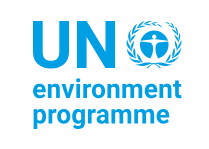Annex I. Measurement methods appropriate for each food chain stage
The following methods have been deemed appropriate for each relevant food chain stage:
- Manufacturing/ processing
- Retail (formal and informal)
- Food service
- Households
1. Manufacturing/processing
| WASTE STREAM | APPROPRIATE MEASUREMENT METHODS | APPROPRIATE MEANS FOR NATIONAL GOVERNMENT TO OBTAIN THE MEASUREMENTS FROM COMPANIES |
|---|---|---|
| Food waste in a container (single stream – not mixed with other wastes) |
Use of records specifying volume or weight e.g. from waste contractor Volume assessment Weighing, of whole containers or samples |
Use of nationally held records e.g. regulatory returns Data provision as part of a framework to tackle food waste (e.g., a voluntary agreement) |
| Food waste in a container (mixed with other wastes) |
Weighing, via waste composition analysis or trial weighing Volume assessment |
Use of nationally held records e.g. regulatory returns Data provision as part of a framework to tackle food waste (e.g., a voluntary agreement) |
| Uncontained food waste (not mixed with other wastes and not discharged to sewer) |
Weighing, of samples or entire stream depending on feasibility Volume assessment |
Use of nationally held records e.g. regulatory returns Data provision as part of a framework to tackle food waste (e.g., a voluntary agreement) |
| Waste discharged to sewer (Level III) |
Use of biological / chemical oxygen demand (BOD and COD), suspended solids (SS). For further advice see: https://www.wrap.org. uk/sites/files/wrap/food-waste-in- effluent-guidelines_1.pd |
Use of nationally held records e.g. regulatory returns Data provision as part of a framework to tackle food waste (e.g., a voluntary agreement) |
| All waste streams | Waste co-efficient applied to material flow Mass balance (i.e., inputs minus outputs) |
Use of nationally held records e.g. regulatory returns Data provision as part of a framework to tackle food waste (e.g., a voluntary agreement) |
It is possible that food manufacture companies keep records of their waste already. Companies may call it something other than waste e.g. leakage, slippage, residue, etc. Therefore, a degree of relationship building and understanding between governments and food manufacturers/processors in the country may need to be built before either understands whether it is possible or not to use company records to build a national picture.
Informal food processing may not be at the scale necessary to quantify under 12.3.1a but this should be an informed decision. It is possible that informal processing occurs on farm or in some households as local business in rural areas. Food removed from the human supply chain in those cases may either be picked up in 12.3.1b or as part of in-home consumption under ‘household’ studies. If the latter, it may be useful to use diaries or surveys to determine how much food waste is likely to be discarded for that reason.
2.Retail (Formal and Informal)
| WASTE STREAM | APPROPRIATE MEASUREMENT METHODS | APPROPRIATE MEANS FOR NATIONAL GOVERNMENT TO OBTAIN THE MEASUREMENTS FROM COMPANIES |
|---|---|---|
| Food waste in a container (single stream – not mixed with other wastes) |
Use of records specifying volume or weight e.g. from waste contractor (direct measurement) Waste composition analysis Scanning items as they are wasted Volume assessment Weighing, of whole containers or samples |
Use of nationally held records e.g. regulatory returns Data provision as part of a framework to tackle food waste (e.g., a voluntary agreement) |
| Food waste in a container (mixed with other wastes) |
Use of records specifying volume or weight e.g. from waste contractor (direct measurement) Waste composition analysis Scanning items as they are wasted |
Use of nationally held records e.g. regulatory returns Data provision as part of a framework to tackle food waste (e.g., a voluntary agreement) |
The methods appropriate for formal and informal retail differ slightly. First, informal retail is unlikely to keep records so weighing or volume assessments are necessary. Secondly, the manner of scaling any measurements for informal retail is likely to be difficult. If informal retail is a large proportion of food retail in a country, an effort will have to be made to quantify the number and type of informal food retailers across different geographic areas. This will help to determine a sample frame for the measurement studies and provide the basis for scaling. However, it is likely that the study on number and type of informal retailers will need to be repeated as a country’s retail market changes between reporting periods.
3. Food service (hospitality and food service including plate waste and within hospitals, etc., formal and informal)
| WASTE STREAM | APPROPRIATE MEASUREMENT METHODS | APPROPRIATE MEANS FOR NATIONAL GOVERNMENT TO OBTAIN THE MEASUREMENTS FROM COMPANIES |
|---|---|---|
| Food waste in a container (single stream – not mixed with other wastes) |
Use of records specifying volume or weight e.g. from waste contractor Scanning items as they are wasted |
Use of nationally held records e.g. regulatory returns Data provision as part of a framework to tackle food waste (e.g., a voluntary agreement) |
| Food waste in a food waste-only container shared with other businesses or households |
Volume assessment Weighing, of whole containers or samples Intercepting waste when shared with other businesses or households |
Use of nationally held records e.g. regulatory returns Data provision as part of a framework to tackle food waste (e.g., a voluntary agreement) |
| Food waste in a container (mixed with other wastes) |
Weighing, via waste composition analysis or trial weighing Volume assessment |
Use of nationally held records e.g. regulatory returns Data provision as part of a framework to tackle food waste (e.g., a voluntary agreement) |
| Food waste in a container mixed with other wastes and shared with other businesses or households | Intercepting waste when shared with other businesses or households |
Use of nationally held records e.g. regulatory returns Data provision as part of a framework to tackle food waste (e.g., a voluntary agreement) |
| Uncontained food waste (not mixed with other wastes and not discharged to sewer) |
Weighing, via waste composition analysis or trial weighing Volume assessment |
Use of nationally held records e.g. regulatory returns Data provision as part of a framework to tackle food waste (e.g., a voluntary agreement) |
The diversity of entity types within this food chain stage is such that records are unlikely to cover them all. Larger public establishments like hospitals or schools may have records or can be more easily regulated than private organisations. The restaurant sector is likely to be diverse and made up of majority small and medium enterprises, many of which may be informal in certain countries. Appropriate methods for measurement are therefore likely to be volume assessments or weighing in a sample study over a series of site visits. The same challenges for scaling such measurement studies apply here as for informal retail; getting as accurate an understanding of the quantity of waste producing entities as possible is as important as the measurement study and not likely to be easy. This is directly linked to SDG 11.6.1 and could be measured as part of a waste composition analysis.
4. Households
| WASTE STREAM | APPROPRIATE MEASUREMENT METHODS | APPROPRIATE MEANS FOR NATIONAL GOVERNMENT TO OBTAIN THE MEASUREMENTS FROM COMPANIES |
|---|---|---|
| Food waste in a container (single stream – not mixed with other wastes) |
Use of records specifying volume or weight e.g. from waste contractor Volume assessment Weighing, of whole containers or samples Food waste diaries |
Commission organisation to conduct studies and scale up on behalf of governments Directly commission studies and maintain oversight of estimates |
| Food waste in a container (mixed with other wastes) | Weighing, via waste composition analysis or trial weighing (linked with SDG 11.6.1) | |
| Uncontained food waste (not mixed with other wastes and not discharged to sewer) | Weighing, via waste composition analysis or trial weighing (linked with SDG 11.6.1) Diaries Volume assessment |
|
| Waste discharged to sewer (for Level III) and food home composted, animal feed | Diaries Diversion and weighing |


